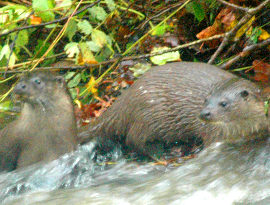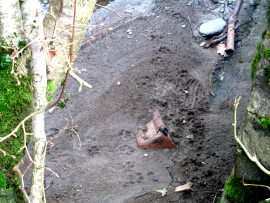
Otter (Lutra lutra)
The otter is a semi-aquatic mammal, which occurs in a wide range of ecological conditions, including inland freshwater and coastal areas (particularly in Scotland).
Inland populations utilise a range of running and standing freshwaters. These must have an abundant supply of food (normally associated with good water quality), together with suitable habitat, such as vegetated river banks, islands, reedbeds and woodland, which are used for foraging, breeding and resting.
Status and distribution
Otter were once widespread in Europe, but populations declined sharply during the 1960s and 1970s due to pollution, exacerbated by hunting and habitat loss. Currently it has a rather discontinuous distribution with strong populations in Greece, Spain, Portugal and much of eastern Europe. Over most of continental western Europe the species is scarce to extinct.
Historically, otters occurred over most of the UK. However habitat loss and, more recently, the impact of toxic organochlorine insecticides caused a marked reduction in the range of the species. At present, the majority of the otter population in Great Britain occurs in Scotland and Wales. The otter is still scarce over much of England, where the highest concentrations are in the south-west. However, recent surveys suggest that the otter population is recovering well and was in 2011 found in Kent meaning it is now present in all UK counties.
ISAC

The upper Wye and its tributaries support one of the largest populations of otters in England and Wales. Their numbers remained strong even during the lowest point of the UK decline, confirming that the site is particularly favourable for this species and the population is highly stable. Otters rely on woodland, scrub and tall bankside vegetation for cover. Resting holts are often be found amongst the roots of large trees at the water's edge, whilst breeding holts are often located in dense cover on the river banks.
This species is, however, threatened by habitat destruction, disturbance and pollution throughout its European range and is specially protected. Within the Irfon, large sections of suitable habitat have been lost due to acidification and degraded riparian habitats. This project will address these two problems and intends to establish two new Otter breeding territories in the previously acid headwaters.
